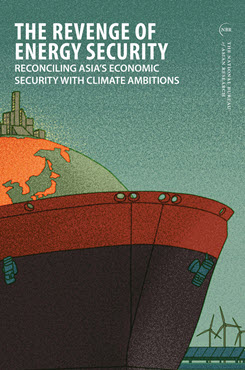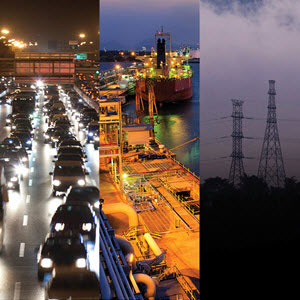Essay in NBR Special Report 105
Asia Rethinks Its Energy Mix after a Volatile Year in Gas Markets
This essay examines how extreme volatility in the global liquefied natural gas (LNG) markets has prompted major Asian economies to re-examine their plans to increase the share of natural gas in their national energy mixes, while keeping in view the need to balance net-zero emissions targets with energy security and affordability.
EXECUTIVE SUMMARY
MAIN ARGUMENT
Asia’s price-sensitive economies are looking at ways to mitigate the potential risk of Europe paying top dollar to continue importing increasing volumes of LNG from the global market to make up for the loss of pipeline-supplied gas from Russia. Though natural gas is widely regarded in Asia as an important transition fuel as countries strive to accelerate their decarbonization efforts in the coming decades, the region is becoming increasingly dependent on importing natural gas as LNG, leaving it vulnerable to instabilities and price fluctuations for the commodity in international markets. Though the volatility in the LNG market in 2022 manifested most acutely in spot prices, Asia’s long-term supply (most of which is benchmarked to Brent crude prices) has also become costlier as oil prices remain elevated.
POLICY IMPLICATIONS
- Even as Asian countries have become more concerned about the volatility of natural gas markets, most alternative sources of energy are far from ideal to replace this clean fuel.
- The region’s increased use of coal, although a cheap and readily available resource, sets it back on its decarbonization goals. Renewables can serve as domestically sourced, low- (or zero-) carbon options, but even with an aggressive capacity buildout, they are often limited by issues of intermittency and a lack of grid connectivity or available energy storage options.
- Not all countries have nuclear power capacity, and those planning to set it up face major political and financing hurdles, not to mention long project lead times.
- Unlike most European countries, which typically seek LNG imports from the U.S. for a short term, Asian importers offer the U.S. long-term demand security.
- The U.S. can help strengthen Asia’s energy security through natural gas by building out its LNG capacity and committing to supplying long-term volumes without requiring buyers to take equity stakes in the liquefaction projects. Selling LNG without destination restrictions, as the U.S. does now, offers much-needed flexibility to buyers in Asia.
- If the U.S. can convince more European buyers to commit to long-term contracts, it would help Asia by ensuring that more liquefaction capacity comes into the market and that occurrences of spot market volatility and price spikes stemming from Europe’s sudden bouts of buying are lowered.
Vandana Hari is the Founder and CEO of Vanda Insights, which provides macroanalysis on the global energy market. Before launching Vanda Insights in September 2016, she served as Asia Editorial Director at S&P Global Platts.



 The Revenge of Energy Security: Reconciling Economic Security with Climate Ambitions in the United States and Asia
The Revenge of Energy Security: Reconciling Economic Security with Climate Ambitions in the United States and Asia
